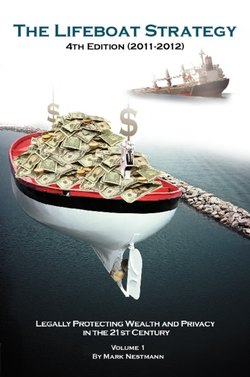Читать книгу THE LIFEBOAT STRATEGY - Mark Nestmann - Страница 18
На сайте Литреса книга снята с продажи.
Fewer Refuges for Private Wealth
ОглавлениеOnly a few decades ago, the bulk of individual or family wealth was in its home, its furnishings, the value of any land, crops and animals, and perhaps a few gold and silver coins. This is tangible wealth.
Today, wealth is represented in many more forms, among them paper currency, holdings in bank and brokerage accounts, etc. Most of these forms of wealth are intangible. They can be bought and sold, or transferred, at the blink of an eye. This makes intangible wealth much more convenient for financial transactions than tangible wealth.
Intangible wealth represents a claim to an underlying asset – debt issued by a corporation or government, for instance, or ownership in a company. This claim takes the form of a stock or bond, issued originally in paper form, but now, more often than not, in the form of a book entry on the electronic ledger of a bank or broker.
The characteristics that make intangible forms of wealth attractive for financial transactions also make them vulnerable. Tangible assets are much harder to deal with: real estate is immobile and relatively illiquid; animals and crops must be maintained. Intangible wealth is both more mobile and often much more liquid than tangible wealth. In the event of a legal dispute, these characteristics make it much more attractive to potential creditors.
Because intangible wealth is often represented by nothing more than blips on a computer screen, its custodians have developed elaborate systems to track it. In the United States, information about these holdings can become public in many ways: lawsuit, divorce, data sharing between companies, etc. Investigators, the IRS, and many other government agencies can often learn what intangible wealth you have, and where you keep it, without going to court.
